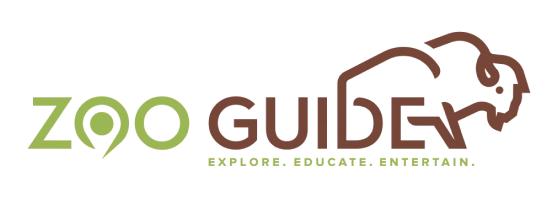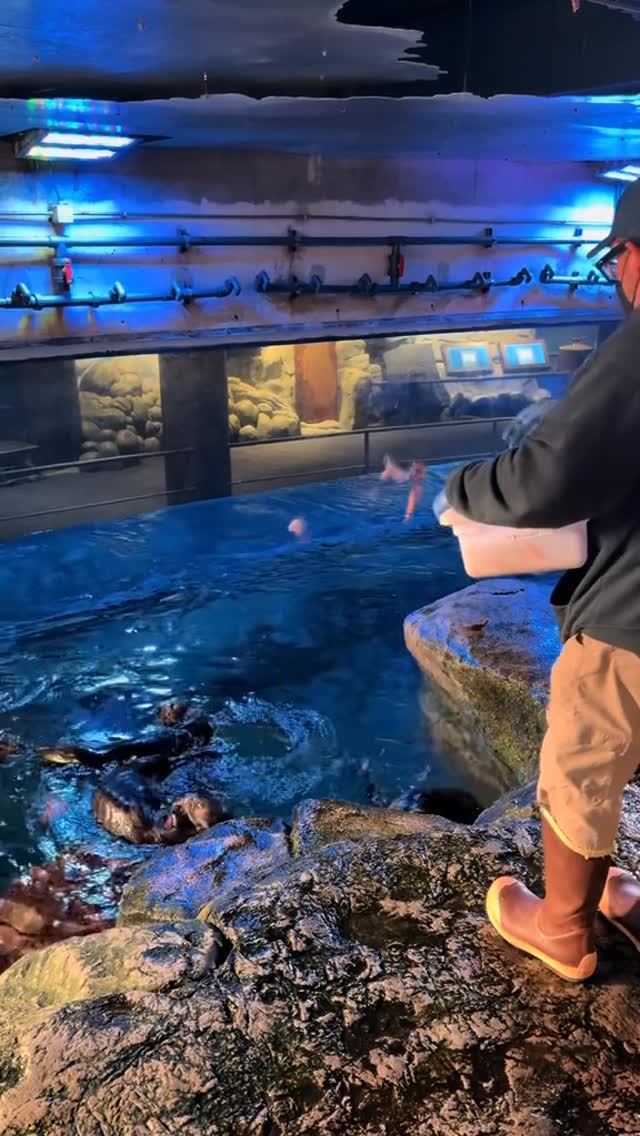- Understanding the role of mammalogists in animal care and conservation efforts
- Insights into otter behavior and biology
- The importance of nutrition and feeding practices for otters in captivity
- Exploring conservation efforts and the challenges faced by otters in the wild
- Engaging with the public to promote awareness and advocacy for wildlife conservation
Switch places with a mammalogist to feed our otters! is not just an exciting opportunity; it reflects a deeper engagement with wildlife biology and conservation. Mammalogists play a crucial role in understanding the needs of various mammals, including otters, which are vital to ecosystem health. This article explores what a mammalogist does, the fascinating biology of otters, proper feeding practices, and the broader conservation challenges these animals face.
A mammalogist specializes in studying mammals, focusing on their behavior, physiology, and ecology. Their work spans a wide range of activities, including conducting field research, monitoring populations, and developing conservation strategies. These experts apply rigorous scientific methods to assess animal health, habitat use, and behavior. For example, a mammalogist may analyze the dietary preferences of a specific species to inform feeding protocols in zoos or wildlife rehabilitation centers.
Mammalogists work closely with zoological institutions, contributing valuable insights to improve animal care. They regularly assess health conditions, monitor social interactions, and evaluate animal enrichment programs designed to stimulate natural behaviors. By interpreting data and observations, mammalogists help zoos implement best practices that enhance the welfare of captive animals.
Otters, part of the aquatic and semi-aquatic family Mustelidae, are fascinating creatures. There are several species, including river otters and sea otters, each adapted to its unique habitat. River otters thrive in freshwater ecosystems, while sea otters are ocean dwellers, known for their thick fur and tool-using behavior. Understanding these adaptations is crucial for their care in a zoo setting.
Otters exhibit numerous social behaviors that are fascinating to observe. They are often playful, engaging in activities like sliding down mud or snow banks and playing with objects. These behaviors serve important functions, including strengthening social bonds and improving survival skills. In captivity, providing opportunities for play and interaction helps mimic natural environments, benefiting their mental and emotional well-being.
Feeding practices are particularly vital in a zoo setting. Nutrition impacts an animal’s overall health, reproductive success, and longevity. Mammalogists meticulously evaluate the dietary needs of otters, considering aspects such as age, activity level, and health status. For example, a typical diet for an otter may include fish, shellfish, and a variety of fruits and vegetables to provide a balanced nutrition profile.
One of the challenges in feeding otters is ensuring they receive the proper balance of protein, fat, and carbohydrates. Mammalogists often collaborate with nutritionists to develop specific feeding protocols. Routine health check-ups aid in monitoring weight and health, adjustments can be made when necessary. Individual preferences may vary as well, requiring staff to pay attention to which foods are favored by each otter.
Conservation efforts for otters extend beyond the confines of a zoo. Many species face threats from habitat loss, pollution, and hunting. River otters, for example, are sensitive to water pollution, which can impact their food sources. Climate change also poses a significant risk, affecting their habitats and food availability.
Engagement with the public is an essential aspect of conservation. Many zoos provide educational programs aimed at raising awareness about the importance of protecting otters and their habitats. By directly involving visitors in feeding activities, such as “switch places with a mammalogist to feed our otters,” zoos create memorable experiences that foster a connection between people and wildlife.
This initiative serves multiple purposes; it not only educates the public about otter care but also highlights the daily actions of mammalogists. Participants gain insight into what it takes to maintain the health and well-being of otters in captivity. These hands-on opportunities can inspire individuals to advocate for wildlife conservation and become actively involved in protecting their habitats.
Public engagement can also lead to greater support for policies aimed at conserving otter populations in the wild. Legislative efforts, such as the protection of wetlands and waterways, are essential to ensuring the survival of these species. Awareness initiatives often coincide with community clean-up events, aiming to reduce pollution and promote stewardship among local residents.
Every interaction with otters can foster a sense of responsibility. Educational efforts encouraged by zoos emphasize simple, actionable steps individuals can take to help. Supporting sustainable practices, participating in local conservation efforts, and advocating for policy changes can collectively make a difference.
Conserving otters and their habitats requires collaboration among various stakeholders, including government agencies, non-profit organizations, and local communities. Mammalogists are often pivotal in these partnerships, providing scientific expertise that informs management practices. Their research helps identify conservation priorities and develop strategies to mitigate threats.
In addition, research findings on otter populations can guide reintroduction programs. Successful breeding and release initiatives have shown promise in restoring wild populations. Understanding genetic diversity is crucial for ensuring resilient populations as they face environmental pressures.
While the excitement of “switching places with a mammalogist to feed our otters!” captures attention, the underlying message revolves around enhancing public knowledge and fostering a commitment to conservation. Engaging people in animal care practices elevates the importance of sustainability and ecological health.
In summary, the role of mammalogists is integral to the conservation and proper care of otters. Understanding the biology and behaviors of these animals allows for improved management and feeding practices. Additionally, public engagement initiatives play a significant role in promoting awareness and support for otter conservation. The complexities of wildlife conservation require the collaboration of scientists, policymakers, and engaged citizens. Together, they can work to ensure a sustainable future for otters and other wildlife.
*****
Source Description
Switch places with a Mammalogist to feed our otters! 🦦


